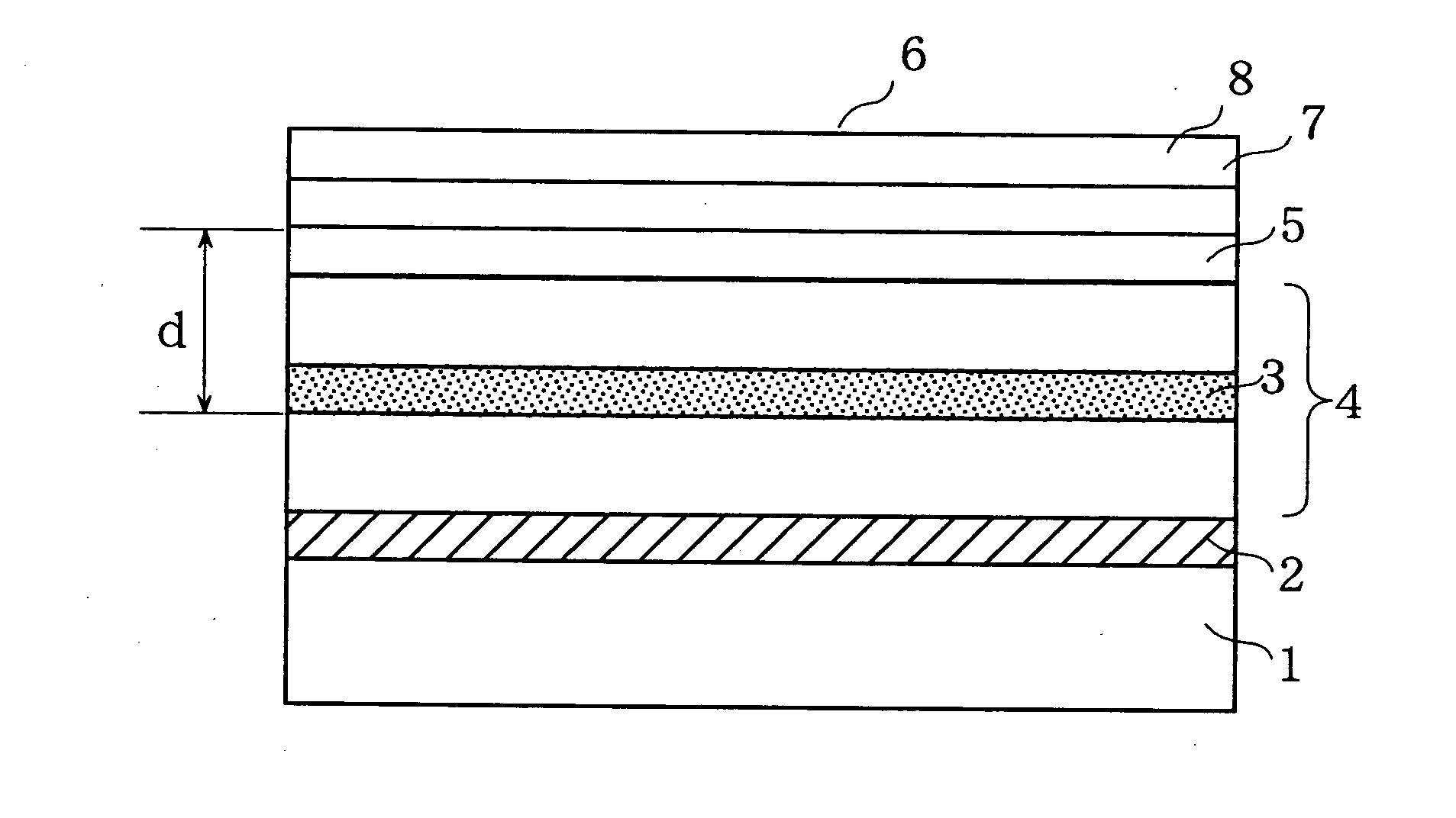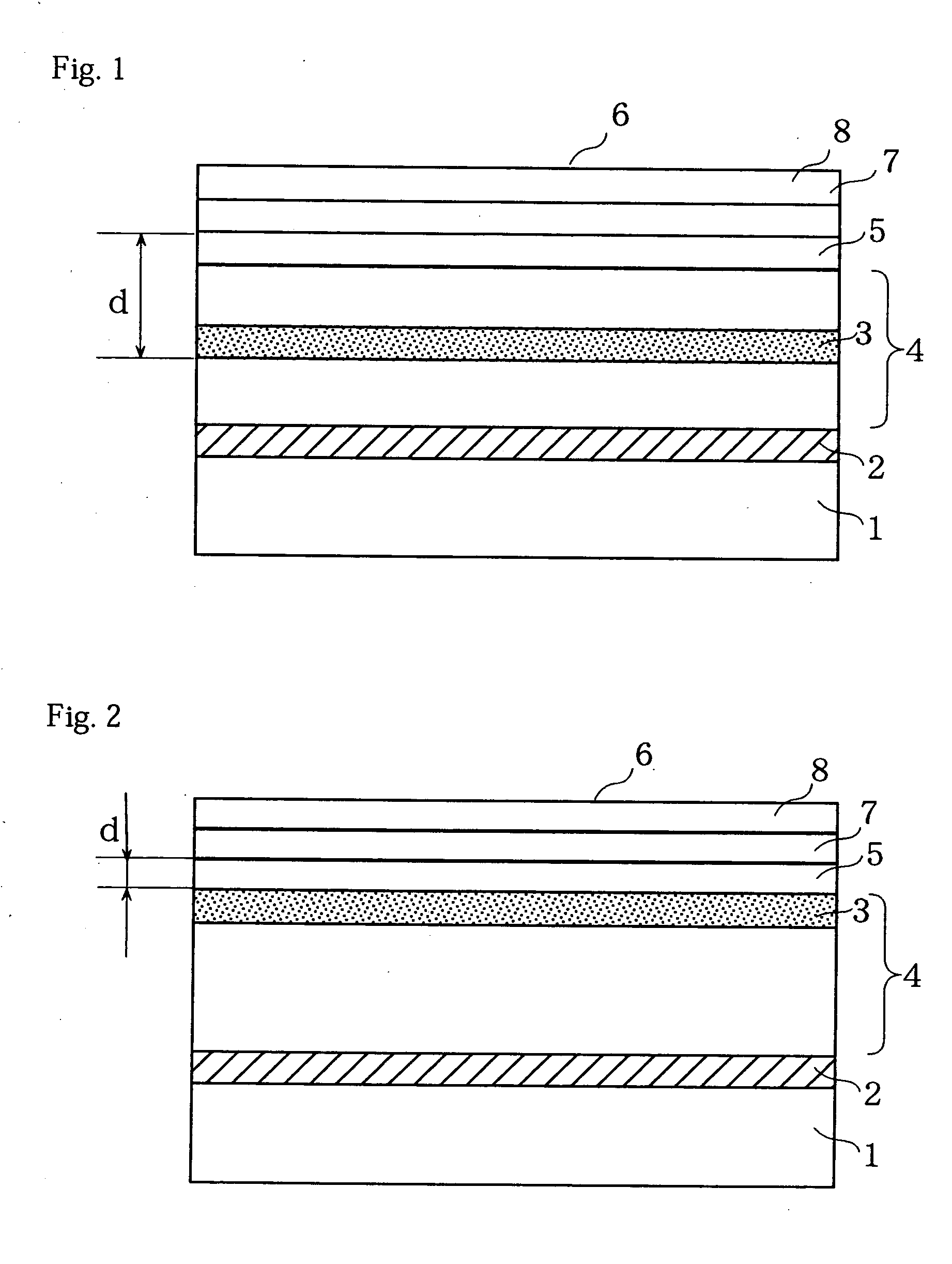Luminous element, and display device and lighting device using it
a light-emitting element and light-emitting element technology, applied in the field of self-luminous light-emitting elements, can solve the problems of limited luminescence efficiency of light-emitting elements, insufficient luminance of elements, and difficulty in forming reflective films on light-emitting elements which correspond to units of pixels, so as to improve the efficiency of external extraction
- Summary
- Abstract
- Description
- Claims
- Application Information
AI Technical Summary
Benefits of technology
Problems solved by technology
Method used
Image
Examples
embodiment 1
[0100] Embodiment 1
[0101] FIG. 1 is a cross-sectional view schematically showing a light-emitting element according to Embodiment 1, which corresponds to the foregoing first aspect. The light-emitting element is constructed such that on a substrate 1a reflective electrode 2 (a light-reflective first electrode layer), a light-emitting layer 4 having a light-emitting region 3 (specifically, the light-emitting layer comprises an electron-injecting layer, an electron transport luminescent material layer, a hole transport material layer, a buffer layer, and the like), a transparent electrode 5 (a transparent second electrode layer), an aerogel layer 7 with a refractive index of approximately 1, and a passivation layer 8 are stacked on top of each other in this order. A surface of the passivation layer 8 serves as a light-extracting surface 6.
[0102] For the substrate 1, any type of substrate can be used as long as it can support the light-emitting element. It is possible to use a resin su...
embodiment 2
[0112] FIG. 2 is a cross-sectional view schematically showing a light-emitting element according to Embodiment 2, which corresponds to the foregoing first aspect. In the light-emitting element, a light-emitting region 3 exists in contact with a transparent electrode 5. In an element having such a construction, when the film thickness of the transparent electrode 5 is 50% or less of the peak wavelength of light emitted from the light-emitting region, most of the light at the critical angle or greater is not reflected due to the same principle as above, and thus the external extraction efficiency is increased.
[0113] Embodiments 1 and 2 described the case where a reflective electrode was used; however, even when an insulating and reflective layer, which is made, for example, of a mixture of a highly light reflective substance such as TiO.sub.2 or BaTiO.sub.3 and a highly dielectric substance such as cyanoethyl cellulose, is provided between the substrate and the first electrode or betw...
embodiment 3
[0114] FIG. 3 is a cross-sectional view schematically showing a light-emitting element according to Embodiment 3, which corresponds to the foregoing second aspect. The light-emitting element is constructed such that on a substrate 1 a reflective electrode 12 having a light-scattering surface (irregular surface) 11, serving as a light-scattering portion, a light-emitting layer 4 having a light-emitting region 3, and a transparent electrode 5 are stacked on top of each other in this order. The surface of the transparent electrode 5 serves as a light-extracting surface 6.
[0115] In the present embodiment, a substrate provided with light-emitting elements, comprising a substrate and a plurality of the above-described light-emitting elements disposed on the substrate, was constructed such that the relationship between the distance between a reflective layer (the reflective electrode or an insulating and reflective layer) composing the light-emitting element, and the light-extracting surfa...
PUM
 Login to View More
Login to View More Abstract
Description
Claims
Application Information
 Login to View More
Login to View More - R&D
- Intellectual Property
- Life Sciences
- Materials
- Tech Scout
- Unparalleled Data Quality
- Higher Quality Content
- 60% Fewer Hallucinations
Browse by: Latest US Patents, China's latest patents, Technical Efficacy Thesaurus, Application Domain, Technology Topic, Popular Technical Reports.
© 2025 PatSnap. All rights reserved.Legal|Privacy policy|Modern Slavery Act Transparency Statement|Sitemap|About US| Contact US: help@patsnap.com



